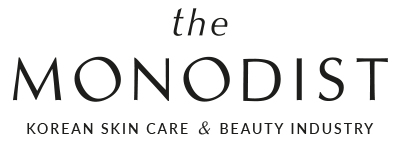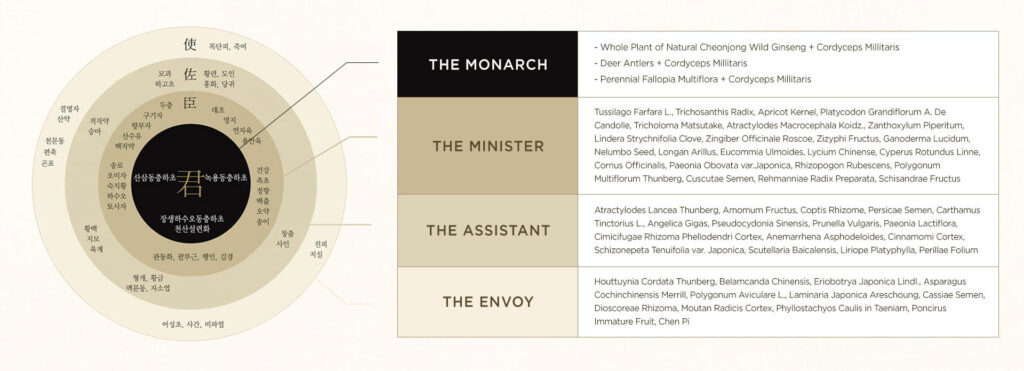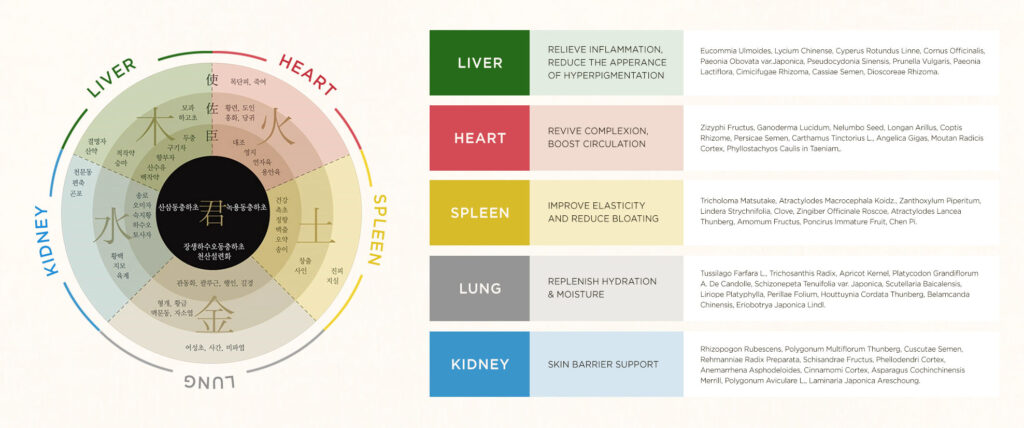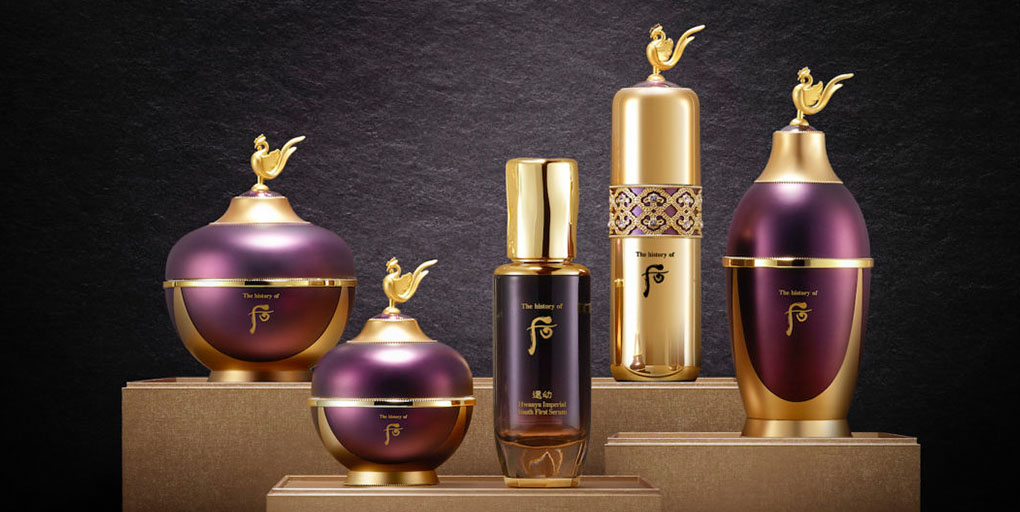
The History of Whoo – Hwanyu line

Hwanyu (환유) is The History of Whoo’s luxury anti-aging skincare line that provides a complete holistic treatment to address complex signs of aging. The line is powered by a core of 74 herbal ingredients that include some of the most precious ingredients available in Oriental Medicine.
Disclaimer: I personally translated the majority of facts and contents in this article from original Korean sources, so I kindly ask you to credit my work if you’re planning to use any of the information included in this guide.
Many concepts mentioned in this guide are based on Oriental Medicine principles, for a better understanding please refer to the introduction to Traditional Korean Medicine on this website. It’s important to stress out that there is no correspondence between Oriental Medicine organs and Western anatomy so capitalised names in this article shouldn’t be interpreted in the Western medical sense.
⬥ Recommended for
- Individuals over 50
- Deep wrinkles
- Reduced elasticity
- Melasma and age spots
- Thin and frail skin
- Dull and tired-looking skin
- Very dry skin

Main Ingredients:
All products in the Hwanyu line contain an active core of 74 herbal ingredients combined following the Gunsinjwasa principle (군신좌사, 君臣佐使), the main formulation principle of Oriental Medicine. The principle, also known as the “Monarch, Minister, Assistant and Envoy”, describes a complex hierarchy of ingredients designed to target all aspects of a condition.
CHINESE NAME | KOREAN NAME | ENGLISH NAME | EXPLANATION |
Jun (君藥) | Gun Yak (군약) | The Monarch (or the Emperor / Chief / Master / Sovereign) | Substance that provides the main therapeutic effect of a prescription. It directly targets the main symptoms of a condition and delivers the strongest pharmaceutical effects thanks to a large number of active molecules. |
Chen (臣藥) | Sin Yak (신약) | The Minister (or the Adviser / Deputy / Associate / Adjucant) | Substance that enhances the pharmacological effects of Gun Yak by supporting the action of the main herb, and targeting any accompanying symptoms of the condition. |
Zuo (佐藥) | Jwa Yak (좌약) | The Assistant (or the Soldier / Adjuvant) | Substance that assists Gun Yak and Shin Yak through a triple action. Firstly, it target secondary symptoms or less important aspects of the condition (helpful assistant). Secondly, it helps relieve or eliminate toxicities and side effects caused by Gun Yak and Sin Yak (corrective assistant). Thirdly, in the treatment of complex diseases, Jwa Yak can exhibit opposite effects of Gun Yak to reduce potential irritation (opposing assistant). |
Shi (使藥) | Sa Yak (사약) | The Envoy (or the Guide / Courier / Messenger) | Substance that harmonizes the actions of the other ingredients and guides them to reach the target organs. |
Some simple prescriptions can contain only the main principles (Gun Yak and Sin Yak) or a substance can serve more than one function within the same formula.
A 2015 study by a Korean research team led by Professor Lee Sang Yup from the Department of Chemical and Biomolecular Engineering at KAIST, found that not only prescriptions formulated following the Gunsinjwasa principle had a synergistic mechanism, but they also shared significant structural similarities to human metabolites, especially when compared to Western medicinal prescriptions1.
Below how the principle was applied to the core ingredients of the Hwanyu line:
Plus, the formula also exhibits the characteristics of the Five Phases (오행, 五行) to provide a complete anti-aging treatment.
The Five Phases is the philosophical notion that all changes in the universe happen in a pattern of five stages. The five stages correspond to five natural elements:
- Wood (birth)
- Fire (growth)
- Earth (maturation)
- Metal (death)
- Water (rebirth)
As part of nature, the internal organs of the human body are also believed to correlate with the Five Phases according to their behavior and function in the body.
- Wood > Liver (liver spreads Qi across the body like branches of a tree)
- Fire > Heart (Heart governs the blood which is red like fire)
- Earth > Spleen (Spleen digests food harvested from earth)
- Metal > Lungs (Lungs works to purfy and detoxify like pure metal)
- Water > Kidney (the Kidney control body fluid)
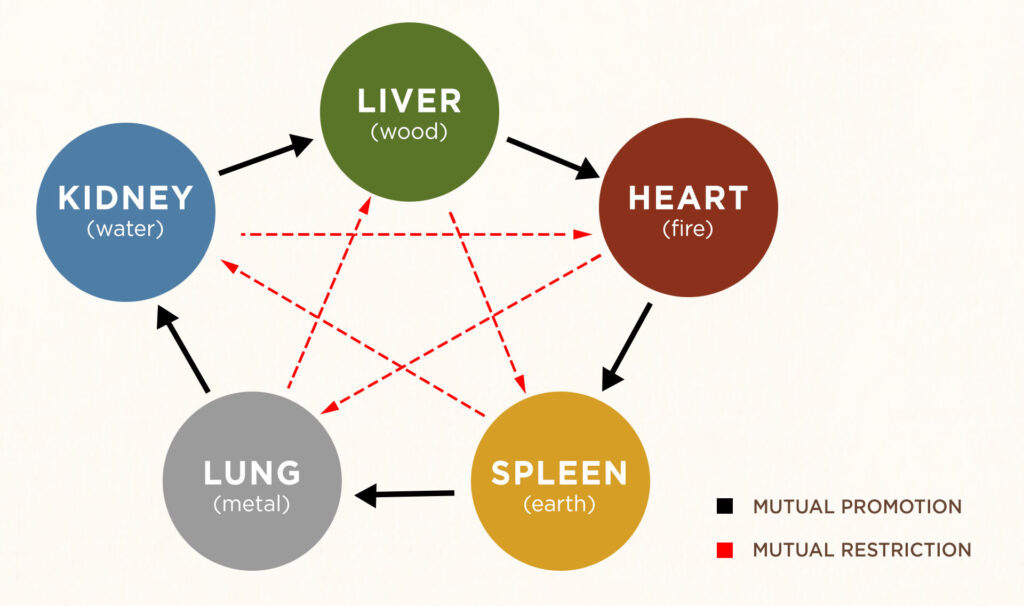
Like all health conditions, in Oriental Medicine the process of skin aging can be traced back to deficiencies of the Five Organs / Phases. According to this theory:
- Liver Qi Deficiency > Excess heat, skin is prone to redness, irritation and blemishes.
- Heart Qi Deficiency > Stagnant circulation, poor transportation of nutrients to the skin. Complexion looks dull and skin loses tone.
- Spleen Qi Deficiency > Body Fluids stagnation, skin is prone to swelling, bloating and loses elasticity.
- Lungs Qi Deficiency > Generalised dryness across all vital organs, extreme skin dryness and weakened skin barrier.
- Kidney Qi Deficiency > Loss of vitality and generalised weakness, skin becomes thin and frail.
For this reason, the Hwanyu line was developed to target all five types of imbalances and provide a holistic skincare treatment.
In addition, the efficacy of the main active ingredients (also known as the Monarch ingredients) was enhanced following the theory of Boncho Baewiron (본초 배위론, 本草 配位論). Boncho Baewiron is a traditional principle of Oriental Medicine in which two ingredients with complimentary properties are combined together in a decoction to double their efficacy.
In the Hwanyu line, the main active ingredients have been combined with Cordyceps Millitaris.
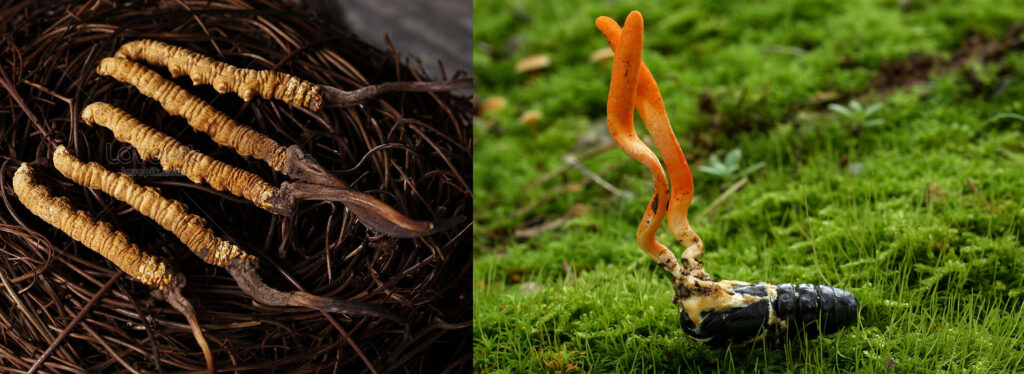
Cordyceps Militaris is a parasitic fungus used in Oriental Medicine for its wide range of pharmacological effects, including: anti-tumoral, immunomodulatory, anti-inflammatory and reinvigorating properties. Much like Wild Ginseng, it’s a naturally scarce ingredient, which lead it to become the world’s most expensive fungus, with prices going up even to $140,000 per kg2. It is said that numerous Chinese leaders, from ancient emperor Qin Shi Huang to Yang Guifei enjoyed the miracles properties of this mushroom3.

The resulting ingredients are:
- Whole Plant of Natural Cheonjong Wild Ginseng + Cordyceps Millitaris – Combination according to the principle of Seunggangbaeo (승강배오, 升降配伍) ), a combination of two ingredients with opposite ascending/descending properties (these are used to guide the movements of the flow of Qi and blood in the body). The complex reinvigorates skin by minimising moisture loss, stimulating collagen synthesis and boosting blood circulation. Replenishes Qi.
- Deer Antlers + Cordyceps Millitaris – Combination according to the principle of Eumyangbaeo (음양배오, 陰陽配伍), a combination of two ingredients with opposite yin/yang properties. The complex improves skin’s immunity against external aggressors by providing intense skin barrier support and restores skin nutrients. Replenishes Blood.
- Perennial Fallopia Multiflora + Cordyceps Millitaris – Combination according to the principle of Sangsoobaeo (상수배오,相須配伍), a combination of two ingredients with similar properties. The complex replenishes skin of vital energy, revives skin tone, smoothes skin texture and promotes a healthier complexion. Replenishes Essence.
These three core ingredients were developed to replenish the main vital fluids that decline with age: Qi (기,氣), Blood (혈, 血) and Essence (정, 精), so their combined action is referred to as Gihyeoljeong (기혈정, 氣血精), literally Qi + Blood + Essence.

⬥ Whole Plant of Natural Cheonjong Wild Ginseng (천종산삼전초, 天種山蔘全草)
Panax Ginseng is one of the most expensive Hanbang herbs. Ginseng is also known as “Shincho” (신초, 神草), meaning “God’s Herb”, and in Oriental Medicine it’s commonly used to replenish Qi (“tonify Qi”) across the Five Organs (오장, 五臟).
Wild Ginseng (Panax Ginseng Meyer cv. Silvatica) and Cultivated Ginseng present significant differences, in terms of market price, morphology and of general properties. In fact, Wild Ginseng was shown to contain at least 10 times the amount of active compounds of Cultivated Ginseng4. This enhanced effectiveness, along with its natural scarcity and difficult availability, make Wild Ginseng one of the most precious herbal remedies in Oriental Medicine.
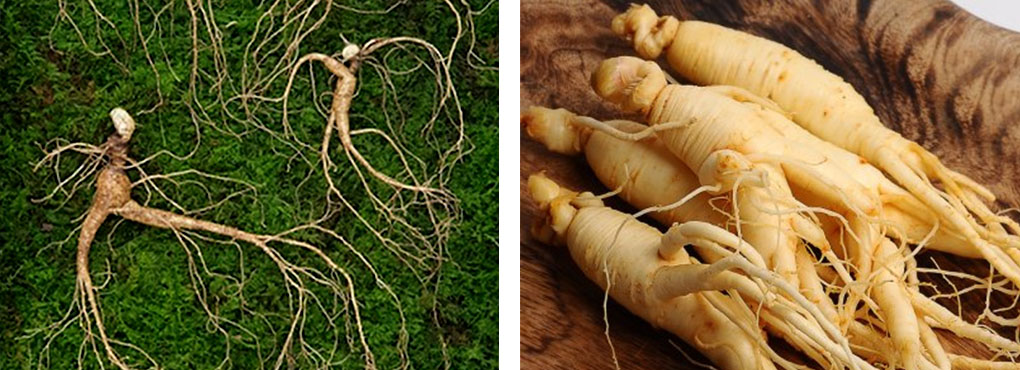
Different morphological characteristics of Wild Ginseng (sx) and Cultivated Ginseng (dx). (source: YTN)
Due to the scarcity of the plant, many Wild Ginseng plants currently on the market are obtained through human intervention. This type of Wild Ginseng is called “Wild-Simulated Ginseng” and results from humans planting ginseng seeds in an environment where Wild Ginseng usually grows, allowing the plant to develop as naturally as possible.
Wild-Simulated Ginseng is known to contain more active ingredients than Cultivated Ginseng but not as much as real Wild Ginseng, and for this reason the market price of Wild-Simulated Ginseng is slightly more accessible5.
“Natural Cheonjong Wild Ginseng” refers to the most precious variety of Wild Ginseng: plants that grow without any human intervention in an optimal natural environment for at least 5 generations6.

In Oriental Medicine, “Daodi” is a term that indicates medicinal herbs with the highest pharmacological properties, grown in specific geographical areas with specific natural conditions and being harvested and processed following specific standards. “Natural Cheonjong Wild Ginseng” describes Korean Wild Ginseng grown in a Daodi region for at least 5 generations.
In particular, the Ginseng used in the Hwanyu line is a 35 year old root that grows in the steep valleys of Gangwon-do, a Korean province renowned for its high mountains.
Very limited amounts of “Natural Cheonjong Wild Ginseng” can only be collected once a year from May to September, the time of the year when nature is at its peak, making the ingredient even more rare. Among all varieties of Panax Ginseng, “Natural Cheonjong Wild Ginseng” is the one with the highest concentration of active principles and the best medicinal efficacy7.
To maximise the benefits of this precious ingredient, The History of Whoo incorporated the whole body of the plant in the Hwanyu line, from leaves to roots.
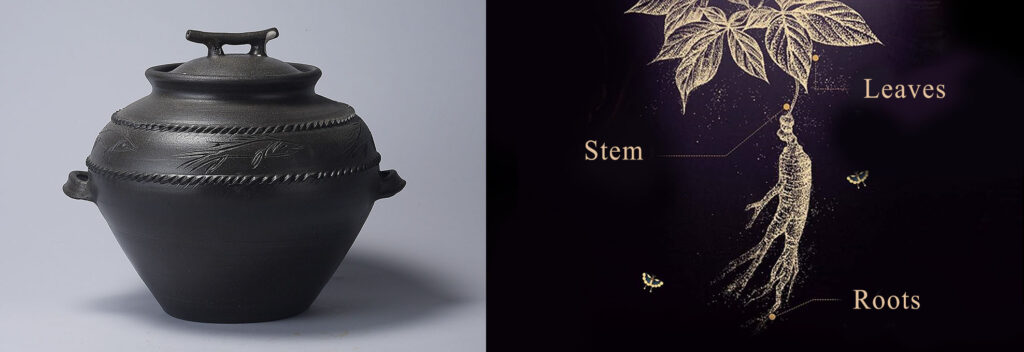
In addition, the plant was processed following the traditional Baekjeunggobeob method (백증고법) to further enhance its active components. Baekjeunggobeob is a decoction technique which consists of heating the whole body of a plant for 100 hours inside a Puredogi (푸레도기), a breathable earthenware traditionally used in the Korean royal court to purify air and water8. The result is a fine medicinal powder (한, 丸), which offers more resistance against sudden temperature changes compared to a liquid remedy.
⬥ Deer Antlers (녹용, 鹿茸)
Deer Antlers are naturally rich in collagen and amino acids. In Oriental Medicine the ingredient is commonly used to improve symptoms of aging because it helps tonify Qi and Blood. and, in turn, reinvigorate the body. Deer Antlers help stimulate skin regeneration, replenish skin nutrients and relieve dryness.
All products in the Hwanyu line contain Siberian Deer Antlers, which are renowned for their abundant vital energy that allows them survive even the coldest winters.
⬥ Perennial Fallopia Multiflora (장생하수오, 長生何首烏)
Hailed as the “Cure to Old Age”, Fallopia Multiflora is traditionally used in Oriental Medicine as a vital tonic to ward off health conditions related to aging. Regular Fallopia Multiflora has a harvesting period of approximately 4 years, whereas Perennial Fallopia Multiflora grows for over 50 years and retains more nutrients from the soil.
⬥ Natural Wild Saussurea Involucrata (천산설련화, 天産雪蓮花)
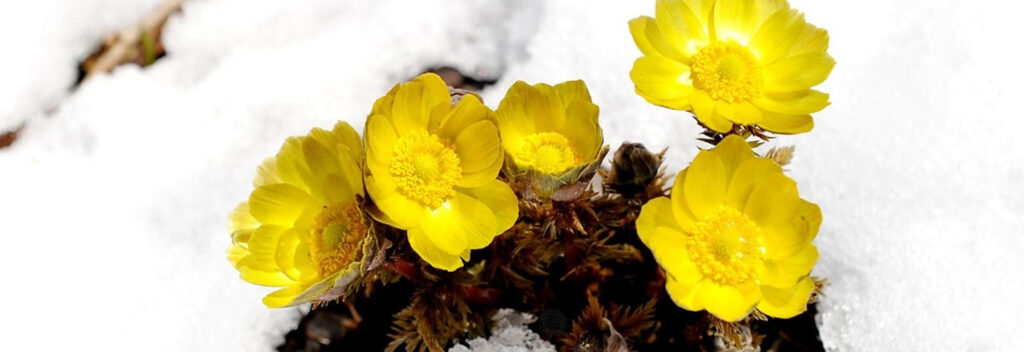
Saussurea Involucrata (also known as “Snow Lotus”) is a rare herb with outstanding vitality that grows only on steep mountain walls at 4000m above sea level. Compared to most plants, the plant exhibits a greater tolerance to extreme temperatures and it’s exactly this ability to bloom in harsh climatic conditions that makes Saussurea Involucrata a highly-valued Oriental Medicine ingredient.
Saussurea Involucrata is naturally rich in proteins and amino acids and exhibits anti-inflammatory, anti-oxidant and rebalancing properties. It’s traditionally used as a Kidney Qi tonic and helps enhance skin’s immunity against external aggressors and prevent moisture loss.
All products in the Hwanyu line contain Natural Wild Saussurea Involucrata, a particularly precious variety of the plant that grows without any human intervention in an optimal natural environment.

Products:
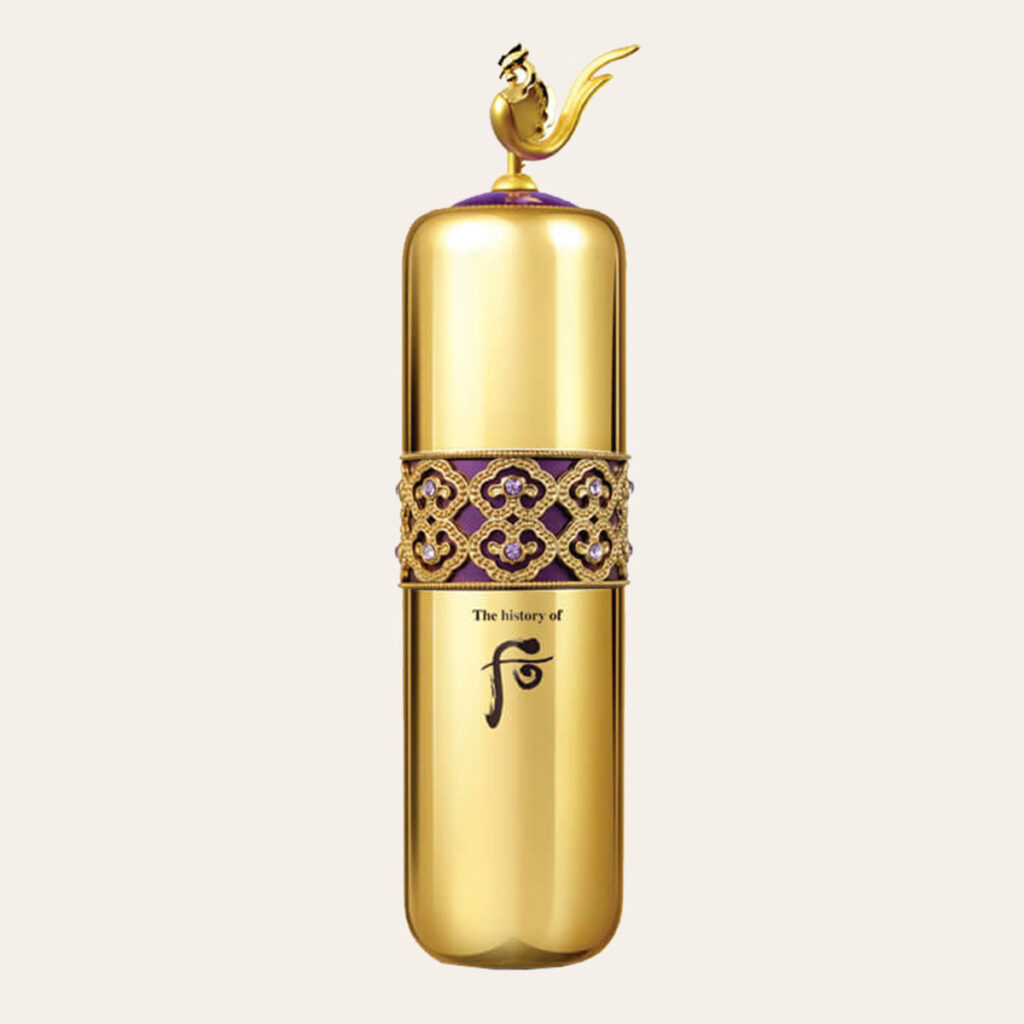
Hwanyu Signature Ampoule
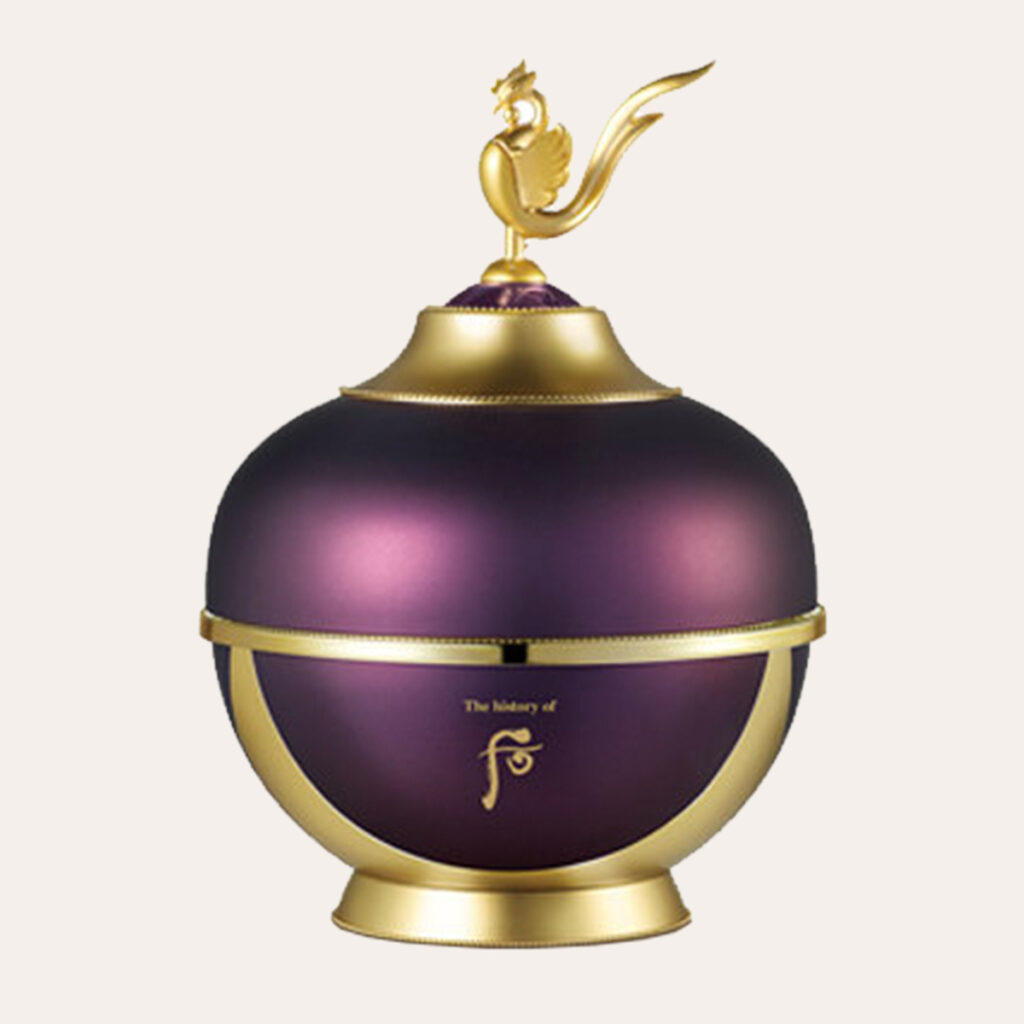
Hwanyudongango Eye Cream
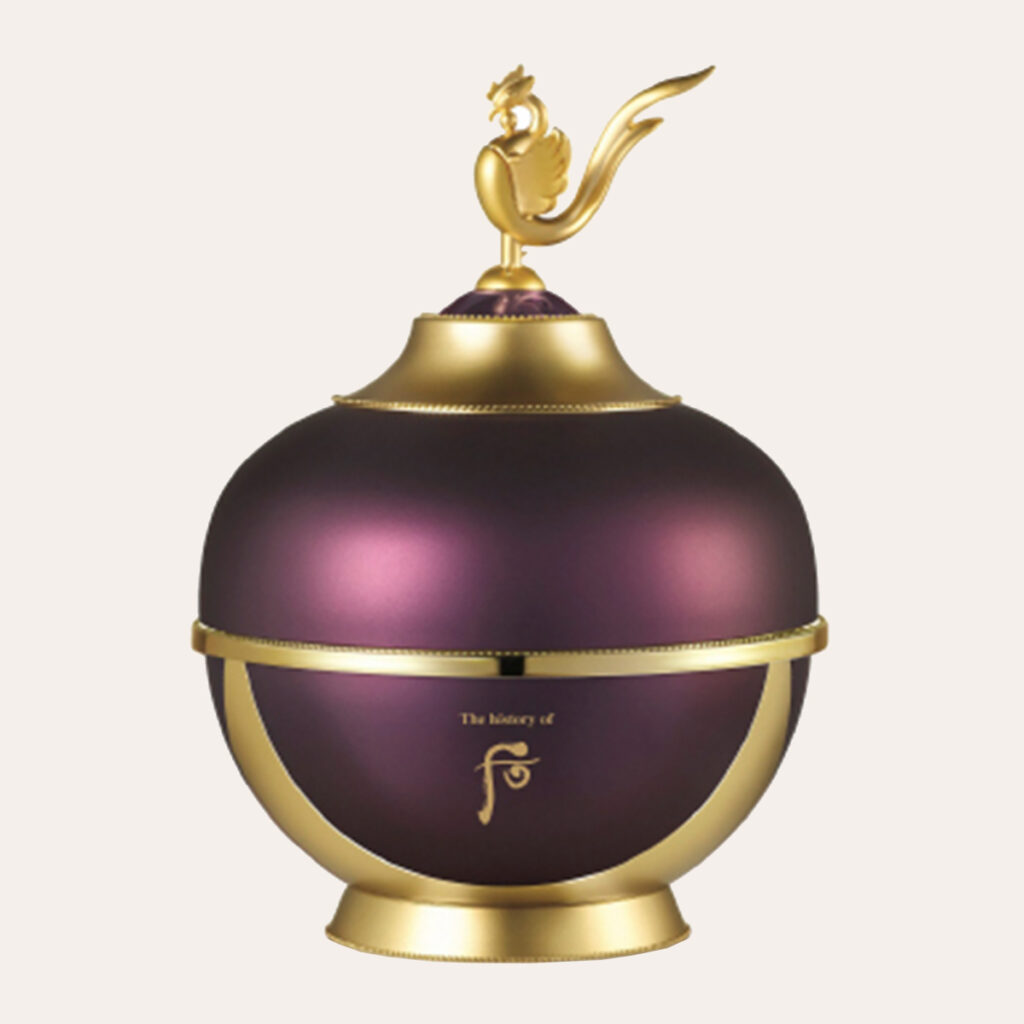
Hwanyugo Cream
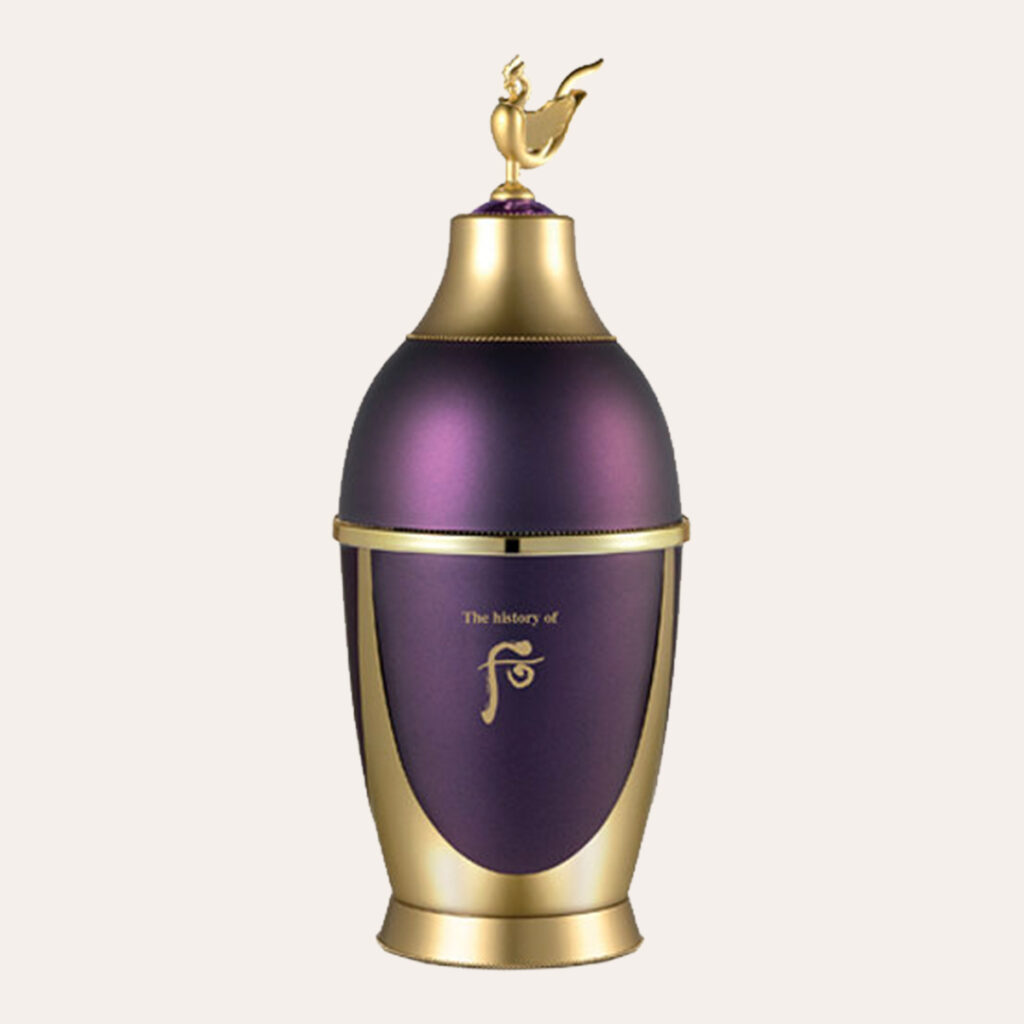
Hwanyu Jinaek Essence
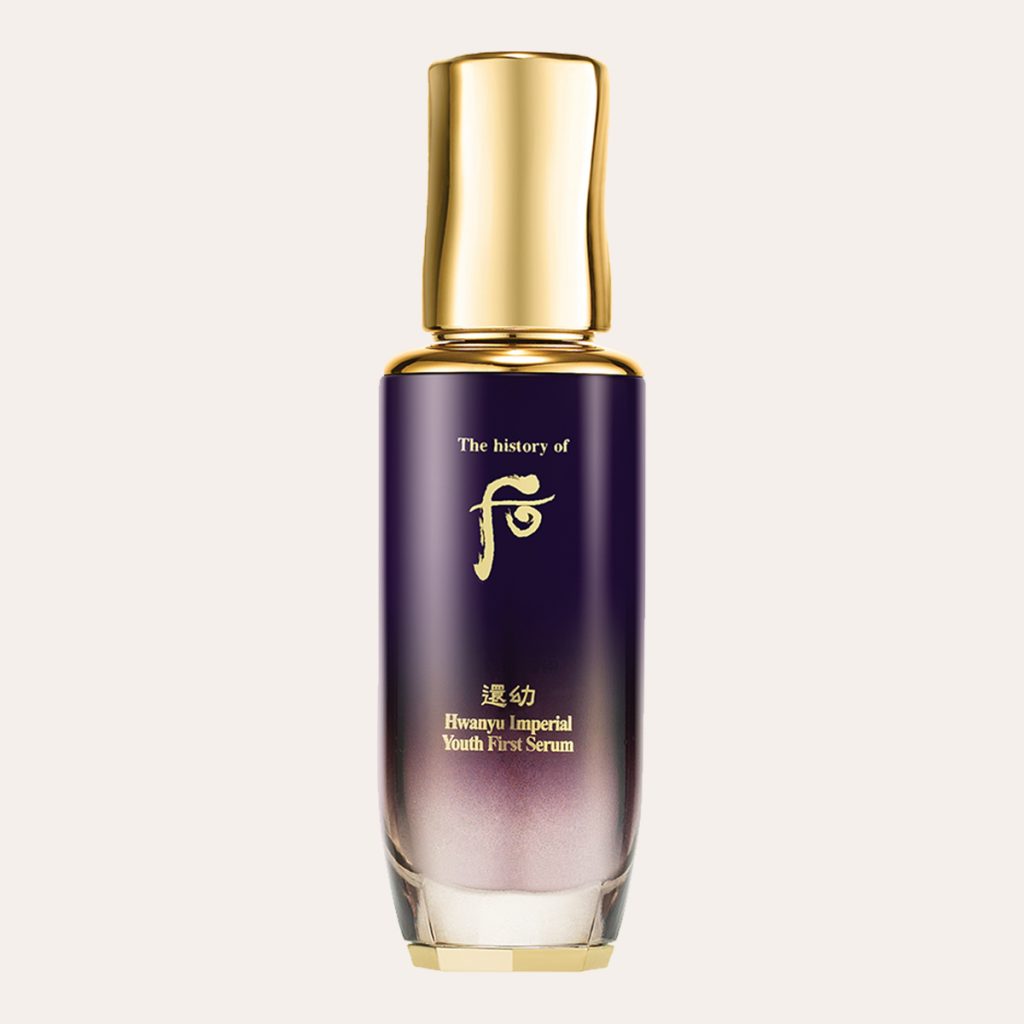
Hwanyu Imperial Youth First Serum
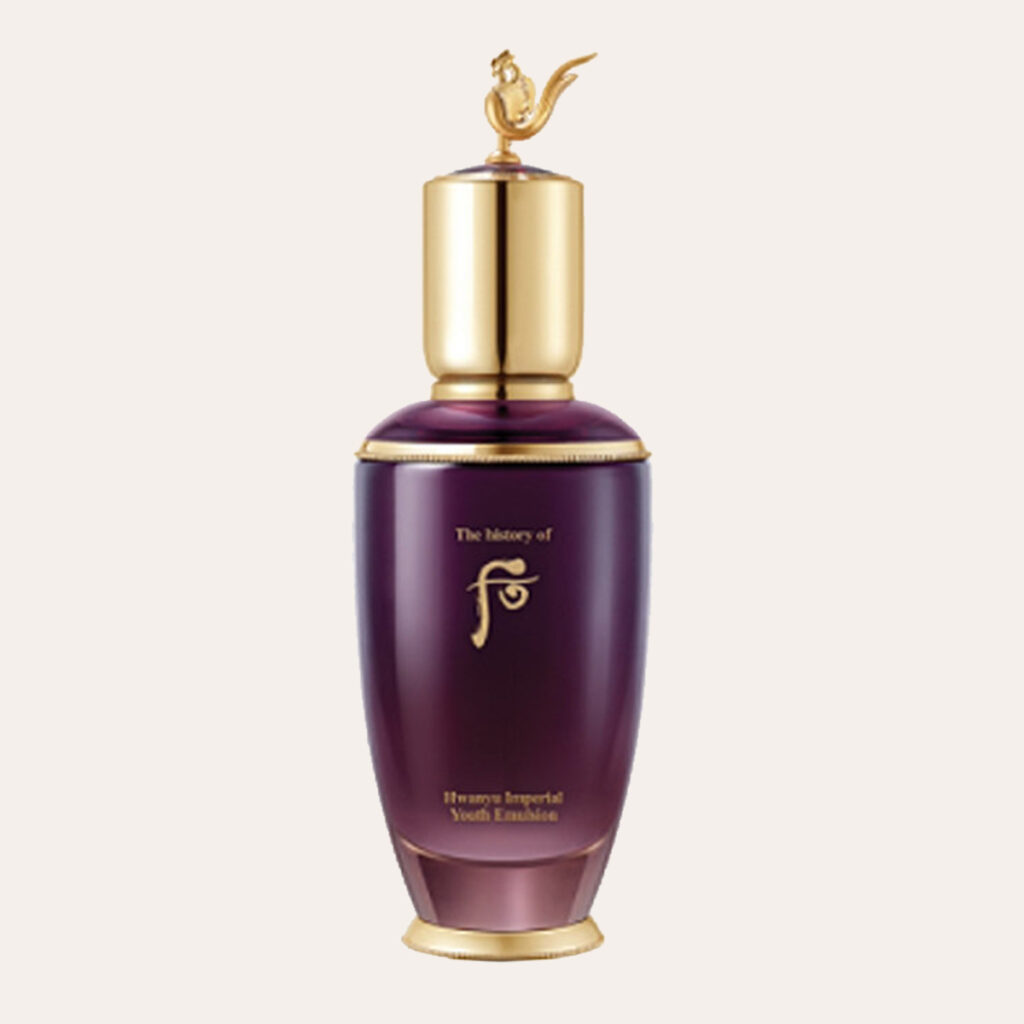
Hwanyu Imperial Youth Emulsion
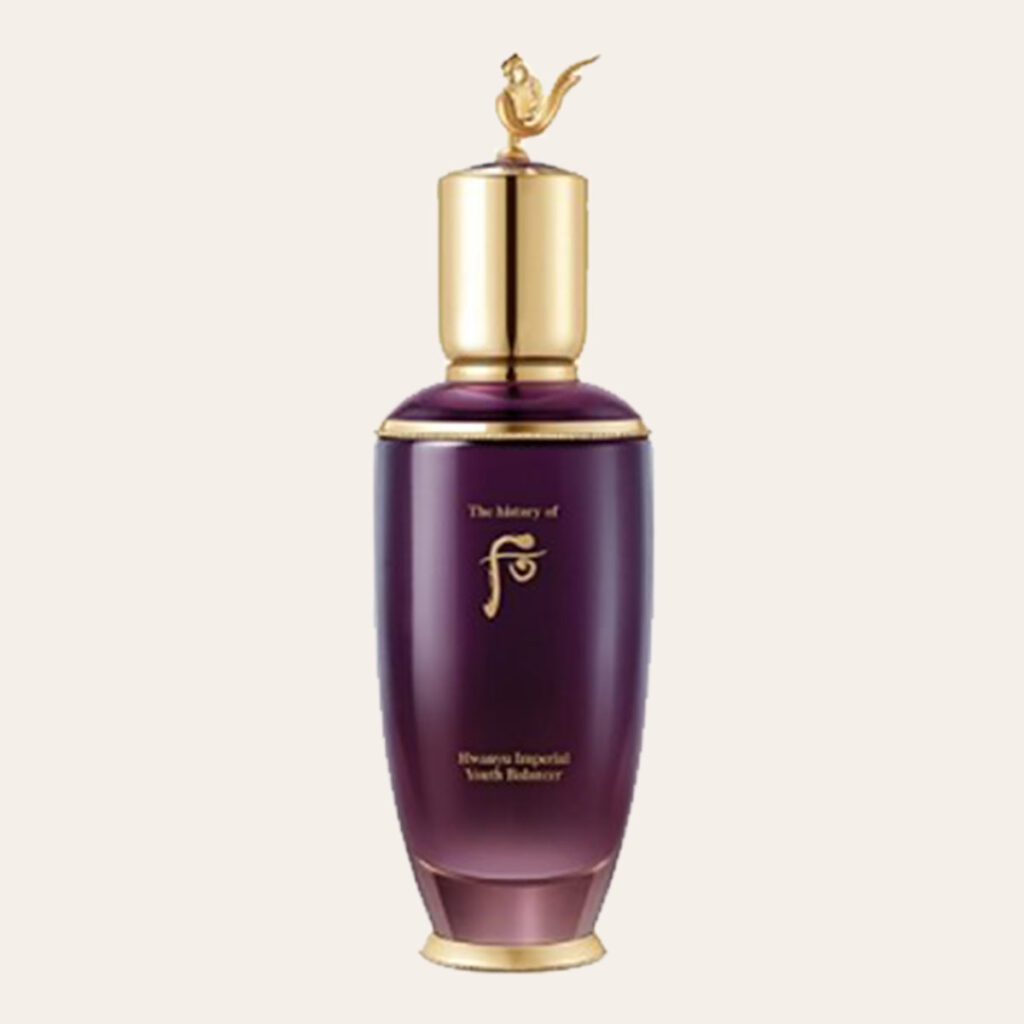
Hwanyu Imperial Youth Balancer
⬥ Recommended order of use
- Hwanyu Imperial Youth First Serum
- Hwanyu Imperial Youth Balancer
- Hwanyu Signature Ampoule
- Hwanyu Jinaek Essence
- Hwanyu Imperial Youth Emulsion
- Hwanyudongango Eye Cream
- Hwanyugo Cream

Shop:
⬥ International Retailers
Make sure to check out the Discount & Coupons page to access exclusive offers for major Korean skincare retailers.
⬥ Korean Retailers

Notes:
1. Kim, H., Ryu, J., Lee, J. et al. (2015). A systems approach to traditional oriental medicine. Nat Biotechnol.
2. Hou, David Anderson, Chia-Yi. (2021). “The World’s Most Valuable Parasite, Caterpillar Fungus, Can Cost up to $63,000 per Pound.” Business Insider.
3. KBS World. (2019). “BIOARA Dreams of Becoming the World’s Leading Cordyceps Provider.”
4. Jeong H. (2009) 인삼ㆍ산양삼ㆍ자연산 산삼의 ginsenoside 함량 분석 및 홍삼화 후 성분변화 비교. 상지대학교 학술정보원.
5. 대한민국 산림청. (2020). 임업 및 산촌 진흥촉진에 관한 법률, 제2조.
6. 이명동. (2006). “산삼의 종류와 복용법.”
7. 경남일보. (2018). “[농업이야기]천종산삼(天種山蔘)장영호(경남도농업기술원 약용자원연구소장).” 경남일보
8. Pure Wab Lab. (n.d.). “Puraedog, Pure Wab Lab.”
Sources: LG Household & Health Care (unless otherwise stated)
Translation: © 2022 Odile Monod
Disclaimer: The list above contains a combination of affiliate and non-affiliate links. If you make a purchase through one of my affiliate links, I will earn a small commission (paid by third party companies, not you). Commissions help fund the content production of the Monodist. For more information on my affiliate policy please refer to my About page. Some links are missing because the item is not available outside of Korea at the moment.
